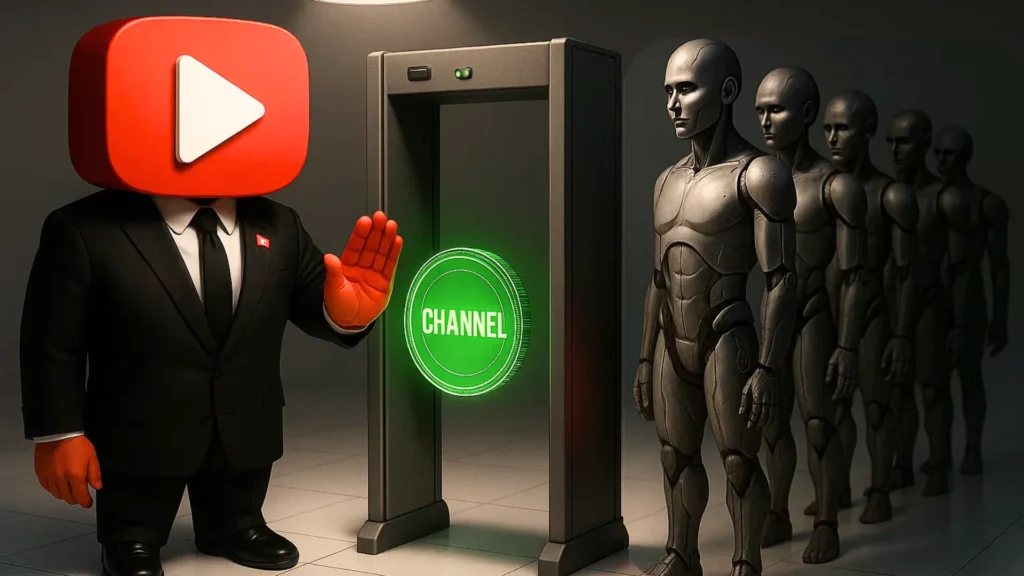YouTube is reshaping its monetization rules in the most significant way since the platform’s inception. Starting July 15, 2025, the YouTube Partner Program will enforce stricter guidelines, requiring content to be “significantly original and authentic” to remain eligible for monetization.
This article will break down exactly what these changes mean for your channel and how to protect your revenue stream.
The July 15 Deadline: What’s Actually Changing
YouTube will update its YouTube Partner Program (YPP) Monetization policies with more detailed guidelines around what type of content can earn creators money and what cannot. The platform is specifically targeting what it calls “inauthentic” content that has flooded the platform since AI tools became mainstream.
The Official Statement
“In order to monetize as part of the YouTube Partner Program (YPP), YouTube has always required creators to upload ‘original’ and ‘authentic’ content. On July 15, 2025, YouTube will update its guidelines to better identify mass-produced and repetitive content. This update better reflects what ‘inauthentic’ content looks like today.”
Why These Changes Matter Now
With the rise of AI technology, YouTube has become flooded with AI slop, a term referencing low-quality media or content made using generative AI technology. The platform has seen an explosion of channels using AI voices over stock footage, recycled content, and mass-produced videos that offer minimal value to viewers.
Content Types Facing Demonetization After July 15
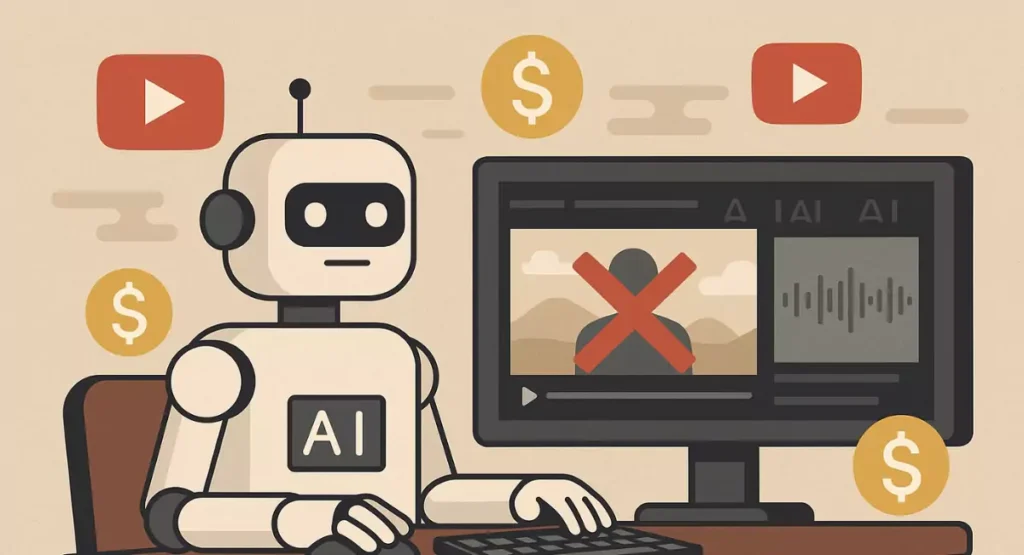
AI-Generated Content Without Human Input
AI voiceovers with no real input are the primary target. This includes:
- Synthetic voices reading articles or scripts without commentary
- AI-generated narration over stock footage compilations
- Automated voice-over videos with no editing or personalization
- AI voice overlaid on photos, video clips, or other repurposed content
Mass-Produced and Repetitive Content
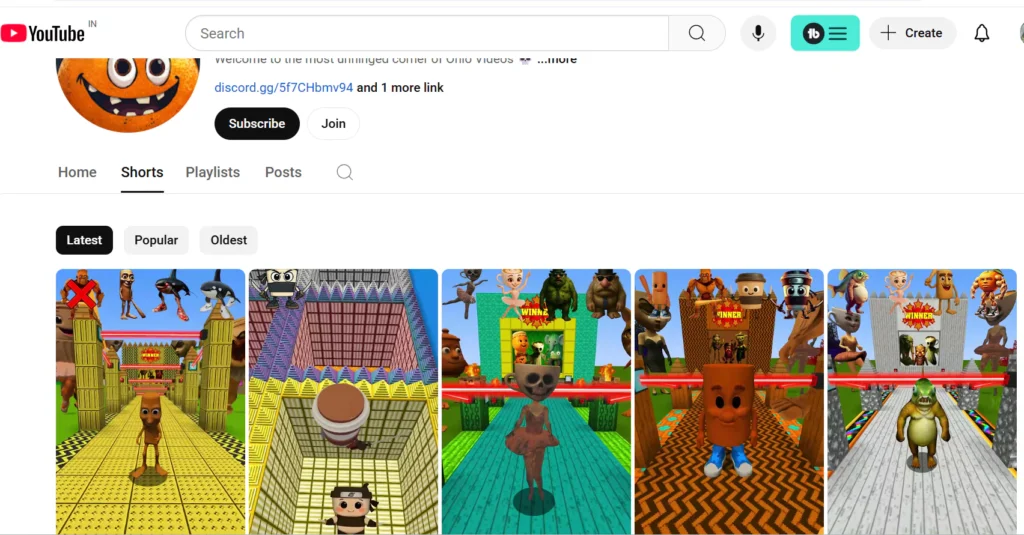
Mass-produced content and videos created in bulk with minimal human input, such as automated presentations with synthetic voices and no personalized narrative. Examples include:
- Template-based videos with minimal variation
- Low-effort slideshows or stock footage compilations
- Copy-paste uploads with cosmetic changes
- Recycled or repurposed videos
High-Risk Reaction Content
Mass-produced reaction content faces scrutiny, particularly:
- Silent reactions with no commentary
- Minimal editing or transformation of original content
- Reaction mashups without substantial input
- Videos where the original content dominates screen time
Real Examples of Affected Channels
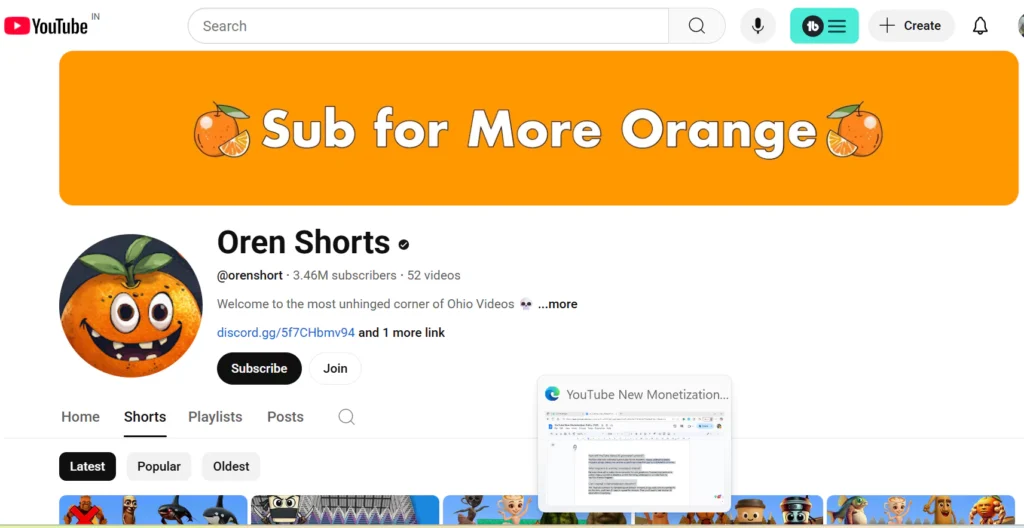
4 of the top 10 fastest-growing YouTube channels featured AI-generated material in every video. The platform has also seen issues with fake, AI-generated videos about news events, like the Diddy trial Oren Shorts, have racked up millions of views, and a true crime murder series on YouTube that went viral was found to be entirely AI-generated.
Content That Will Continue to Earn Revenue
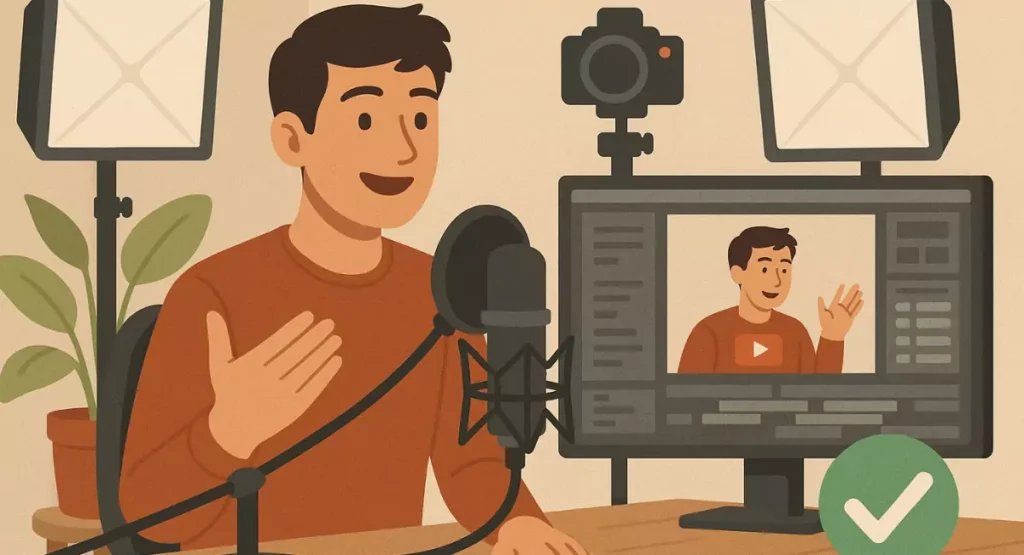
Authentic Commentary and Analysis
Your channel remains safe if you provide:
- Original voice and perspective on trending topics
- Educational breakdowns with your expertise
- Commentary that adds substantial value
- Personal experiences and storytelling
Properly Edited Reaction Content
Creators must now add clear value, commentary, or editing to reused content to avoid penalties. Successful reaction content includes:
- Frequent pausing for commentary
- Reshaping the viewing experience through editing
- Adding context, opinions, and expertise
- Using overlays and visual commentary
Original Productions
Content that performs well includes:
- Educational videos with unique explanations, research, or tutorials that teach something new
- Innovative entertainment content, such as original sketches, short films, vlogs, or creative analysis
- Personal vlogs and lifestyle content
- Original music and creative projects
Impact on Different Creator Categories
Small vs. Large Creators
Smaller creators are already bracing for impact. While the big names might get a wrist slap or a second chance, lesser-known channels are far more likely to see their monetization privileges revoked with little recourse. This policy change may disproportionately affect:
- New creators building audience through reaction content
- Channels with fewer than 100,000 subscribers
- International creators without brand partnerships
Earnings Impact Data
Though these changes will affect a significant number of channels, 99% of those affected were making less than $100 per year in the last year, with 90% earning less than $2.50 in the last month. However, this doesn’t account for the potential growth these channels might have achieved.
How to Prepare for These Changes Before July 15
Audit Your Existing Content
Review your recent uploads for:
- AI-generated elements without disclosure
- Repetitive formats or templates
- Lack of original commentary
- Heavy reliance on reused content
Strengthen Your Content Strategy
You need to show up, speak up, and make your voice count before the algorithm decides you’re not worth listening to. Implement these changes:
For Reaction Creators:
- Pause content frequently for commentary
- Add your unique perspective and expertise
- Edit the content to focus on your reactions
- Include pre- and post-reaction discussions
For Educational Content:
- Develop original research and insights
- Create unique explanations and tutorials
- Add personal experiences and examples
- Build content around your expertise
Diversify Your Revenue Streams
Ad revenue alone is no longer a sustainable strategy, especially for Shorts-focused creators. YouTube is actively encouraging monetization strategies beyond advertising, such as shopping integrations, memberships, and fan funding. You can consider the following alternatives:
- Channel memberships (500 subscribers for fan funding monetization features)
- Super Chat and Super Thanks
- YouTube Shopping integration
- Brand partnerships and sponsorships
Technical Enforcement and Review Process
How YouTube Will Identify Violating Content
The platform will likely use a combination of AI tools and human reviewers to identify non-compliant content. YouTube’s review process focuses on:
- Channel’s main theme and most-viewed videos
- Newest uploads and biggest proportion of watch time
- Video metadata, including titles and descriptions
- Overall content patterns and repetition
Potential Consequences
Failing to meet these standards may lead to full monetization loss, not just video-by-video warnings. Possible penalties include:
- Individual video demonetization
- Removal from the YouTube Partner Program
- Channel suspension in severe cases
- Loss of access to monetization features
Revenue and Earnings Outlook for 2025
Current Monetization Statistics
On average, YouTube pays creators between $3 to $5 per 1,000 views in 2025, although actual earnings vary significantly based on niche, audience demographics, video length, and ad formats. The platform continues to offer competitive revenue sharing:
- Creators keep 45% of the allocated ad revenue from their Shorts views (YouTube retains 55%)
- Long-form content maintains the 55/45 split favoring creators
- In 2025, you can expect a YouTube CPM of 2.50 EUR, with a 2.5th percentile of 1.00 EUR and a 97.5th percentile of 8.00 EUR
Market Opportunities
For creators who focus on original content and real engagement, this update may actually improve their reach and ad revenue. With less competition from AI-generated spam, authentic videos are more likely to get visibility and earn more from ads.
Long-term Implications for Content Creation
Shifting Towards Authenticity
This shift highlights YouTube’s commitment to fostering a platform of high-quality, authentic content. For creators, it’s a call to action: embrace your unique voice, invest in genuine creativity, and focus on delivering meaningful experiences to your audience.
Future Policy Evolution
YouTube has signaled this won’t be the last major policy update. As AI-generated content floods the internet, and as creators look for faster, easier ways to grow channels, platforms like YouTube are going to keep changing the rules in real time.
Platform Competition
YouTube’s decision sets a precedent that other major platforms may follow as the debate over synthetic media intensifies. This could reshape the entire creator economy across social media platforms.
Action Steps for Creators
Immediate Actions (Before July 15)
- Content Audit: Review your recent uploads for potential policy violations
- Strategy Pivot: Start creating more original, commentary-heavy content
- Diversification: Set up alternative revenue streams like memberships
- Documentation: Begin disclosing any AI tool usage in your content
Long-term Strategy
- Voice Development: Focus on building your unique perspective and expertise
- Community Building: Invest in audience engagement beyond just views
- Quality Over Quantity: Reduce upload frequency to focus on higher-quality content
- Cross-Platform Presence: Build your audience on multiple platforms
The YouTube monetization policy 2025 update represents a fundamental shift toward authentic, human-created content. While these changes may initially disrupt some creators’ revenue streams, they ultimately aim to create a more sustainable and valuable platform for both creators and viewers.
Success in this new environment requires adaptation, creativity, and a genuine commitment to providing value to your audience. The creators who thrive will be those who embrace authenticity over automation and focus on building real connections with their viewers.
Start preparing now, and your channel will not only survive these changes but potentially benefit from reduced competition and increased visibility for quality content.
Frequently Asked Questions
Will reaction videos be completely banned?
No. YouTube Head of Editorial & Creator Liaison Rene Ritchie says that the change is just a “minor update” to YouTube’s longstanding YPP policies. Reaction videos that add substantial commentary and transformation will continue to be monetized.
How will YouTube detect AI-generated content?
YouTube uses both automated systems and human reviewers. Videos undergoing checks (including private videos) may receive an additional review that may be completed by a human.
What happens to existing monetized videos?
Existing videos will be subject to review under the new guidelines. Channels that continue to publish mass-produced or repetitive content risk being suspended or removed from the YouTube Partner Program.
Can I appeal a demonetization decision?
Yes, YouTube maintains its standard appeal process. However, If you apply and are rejected for the first time, you’ll have 21 days to appeal the decision. Then you’ll have to wait another 30 days before re-applying.

